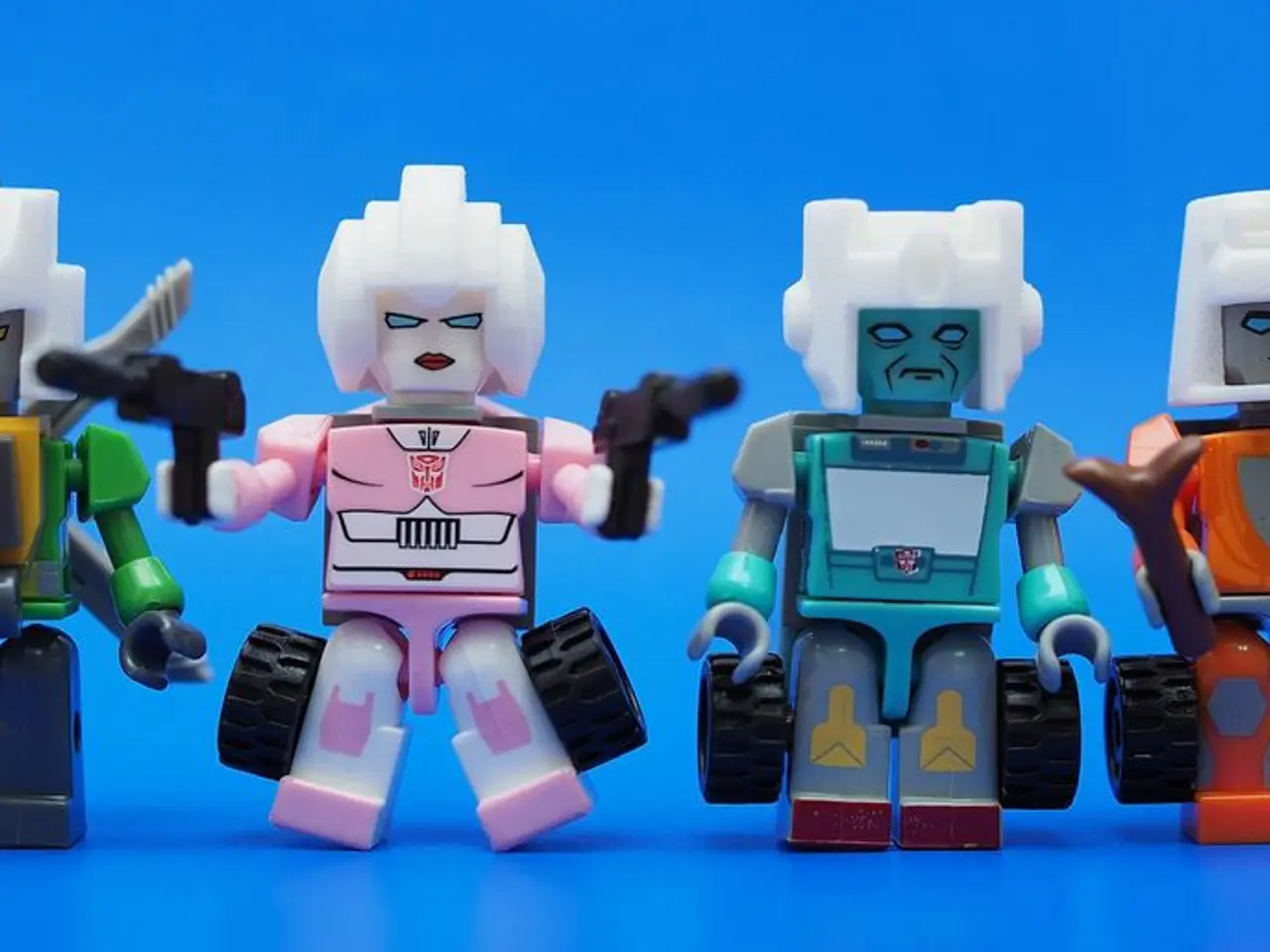Portable Ałıpbi Design: Montessori-Inspired Child-Robot Interaction for Long-Term Alphabet Mastery
In the heart of Central Asia, Kazakhstan is embarking on a significant language reform, transitioning from Cyrillic to Latin script by 2031. This shift poses challenges, particularly for young learners, in early and continuous literacy development. To address these challenges, a novel educational tool has been proposed – the Moveable Älipbi robotic system.
The Moveable Älipbi is an innovative robotic system designed to aid Kazakh children in learning the Latin alphabet. This educational robot employs the principles of the Montessori pedagogy, learning through manipulation, multi-sensory engagement, and child-led discovery.
Recent research has shed light on the strengths and potential areas for improvement in the Moveable Älipbi's design. The system's tangible letter blocks and robotic arm facilitate kinesthetic learning, while incorporating auditory feedback and visual cues enhances retention. The simplicity of the robot's interface and clear instructions are crucial for young learners, ensuring an intuitive user experience.
To boost engagement and motivation, the Moveable Älipbi incorporates game-like challenges, adapts difficulty levels according to each child's progress, and allows for collaborative play. These features improve social and learning outcomes, making the learning process more enjoyable for children.
The system's alignment with Montessori methods supports self-directed learning, while helping smooth the transition from Cyrillic to Latin alphabet by familiarizing children with letter shapes, sounds, and writing through hands-on activities. Real-time, gentle correction provided by the robot helps children self-correct without frustration, fostering a positive learning environment.
The Moveable Älipbi's design involves multiple iterations, testing with children in specific age groups, and modifying learning activities accordingly. To improve, the design should focus on adaptive, culturally relevant, and engaging interaction enhancements, with robust pedagogical support and meaningful involvement of caregivers and educators.
The implications for improving the interaction design and activities of the Moveable Älipbi robotic system are discussed based on the findings. Adaptive learning algorithms, improved haptic feedback, and voice interaction are key areas for enhancement. To improve engagement strategies, storytelling integration, progress tracking & rewards, and cultural and linguistic relevance are crucial.
As Kazakhstan moves towards adopting the Latin alphabet, the Moveable Älipbi robotic system offers a promising solution to boost children's motivation in learning the new script. The system's tangible, multi-sensory interaction aligned with Montessori methods underscores its potential in facilitating Kazakh children's learning of the Latin alphabet. With ongoing improvements, the Moveable Älipbi could revolutionize education in Kazakhstan and beyond.
The Moveable Älipbi robotic system, designed for Kazakh children, employs technology like artificial-intelligence to aid in the learning of the Latin alphabet, an essential part of education-and-self-development during the language reform in Kazakhstan. By incorporating game-like challenges, adaptive difficulty levels, and collaborative play, this system leverages the principles of artificial-intelligence to make learning more engaging and enjoyable for young learners.




